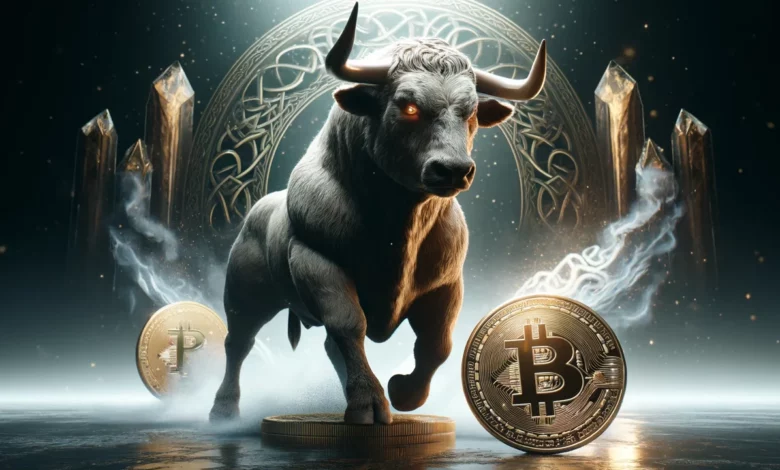Bitcoin Halving: World’s biggest crypto reaches supply milestone, trades over ₹58 lakh

Bitcoin Halving: World’s biggest crypto reaches supply milestone, trades over ₹58 lakh
On April 19, Bitcoin, the foremost cryptocurrency globally, experienced a pre-scheduled decrease in the rate at which new coins are generated, known as a “halving.” This event, which takes place approximately every four years, aims to gradually reduce the supply of Bitcoin, in line with the system designed by its creator, Satoshi Nakamoto, who set a limit of 21 million coins for the total supply.
According to CoinGecko, the halving is an integral part of Bitcoin’s design to control inflation and enhance its scarcity, factors that are crucial in solidifying its value as a finite resource. On the day of the halving, data from Coinmarketcap indicated that Bitcoin’s market dominance slightly increased to 54.14 percent, reflecting a marginal gain of 0.12 percent.

Despite the significant market anticipation surrounding the halving, Bitcoin’s price showed remarkable stability shortly after the event. It experienced a minor decrease of 0.47 percent, bringing the price to approximately ₹58,89,117 on the Wazirx exchange.
The recent months have seen notable volatility in Bitcoin’s value. In March 2024, the cryptocurrency reached a record high of USD 73,803.25. However, it has witnessed a partial retreat from this peak. The broader cryptocurrency market has also been influenced positively by recent developments, such as the approval of spot Bitcoin ETFs in the United States and the anticipation of reduced interest rates, which could foster a more conducive environment for digital assets. This halving event was eagerly awaited by cryptocurrency enthusiasts who view such occurrences as pivotal in reinforcing Bitcoin’s stature as a scarce digital asset.

What do experts believe?
Andrew O’Neill, a seasoned crypto analyst from S&P Global, expressed a measured skepticism regarding the predictive power of Bitcoin’s past halving events on its future pricing. In a statement to Reuters, O’Neill noted, “I am somewhat skeptical of the lessons that can be taken in terms of price prediction from previous halvings.” He emphasized that the halving is just one of many variables that could influence Bitcoin’s price trajectory, stating, “It’s only one factor in a multitude of factors that can drive price.”
In the run-up to the recent halving event, analysts at JPMorgan held a pessimistic outlook on the potential price movement of Bitcoin. They anticipated a decline in Bitcoin’s price post-halving, arguing that it was “overbought” amidst a lackluster environment for crypto funding. As reported by Reuters, the JPMorgan team was clear in their analysis: “We do not expect Bitcoin price increases post halving as it has been already priced in.”

On the market dynamics surrounding the halving, Parth Chaturvedi, the Investments Lead at CoinSwitch Ventures, provided insights to Mint on the broader impact of the event on cryptocurrency markets. He remarked, “The markets have priced in the halving, so there wasn’t any major volatility close to the event.” Chaturvedi highlighted a significant observation where, despite a downturn in tech stock prices, cryptocurrency prices demonstrated resilience and even gained. “If you see yesterday’s stark contrast in tech stock prices tanking but crypto prices moving higher; one can understand how crypto is decoupling itself as a new asset class,” he explained.
Chaturvedi further elaborated on the current market conditions and the outlook following the halving. He noted that although prices are generally lower from their recent peaks, primarily due to geopolitical tensions, the cryptocurrency market might face some near-term downward pressure as miners and other ecosystem participants adjust to the new supply dynamics introduced by the halving. He underscored the significance of the fourth halving, which has reduced Bitcoin’s annual inflation rate to below that of gold, potentially enhancing its appeal as a ‘store of value’ asset class. “The 4th halving brings BTC’s annual inflation to less than gold’s and will further push investors to explore it as a ‘store of value’ asset class,” Chaturvedi added.
What does Bitcoin halving mean?
Bitcoin halving is an event meticulously programmed into the underlying code of Bitcoin, set to occur approximately every four years. This significant event involves halving the rewards that miners receive for validating new transactions on the Bitcoin blockchain. As a result, the rate at which new bitcoins are introduced into the system is reduced by half. This deliberate reduction in supply rate is akin to the way scarcity is introduced in precious metals, which can enhance the value of the asset over time.

The halving mechanism is designed to mimic the economic principle of supply and demand; as fewer bitcoins are generated, the scarcity of the digital currency increases if demand continues to grow or remains steady. This scarcity is intended to prevent inflation and extend the life span of the reward system for miners, ensuring that bitcoin continues to be mined for a longer period. Theoretically, this scarcity could lead to an increase in Bitcoin’s value over time, assuming that demand for Bitcoin either remains constant or increases. This mechanism is a critical aspect of Bitcoin’s economic model and contributes to its appeal as a potential long-term store of value.




